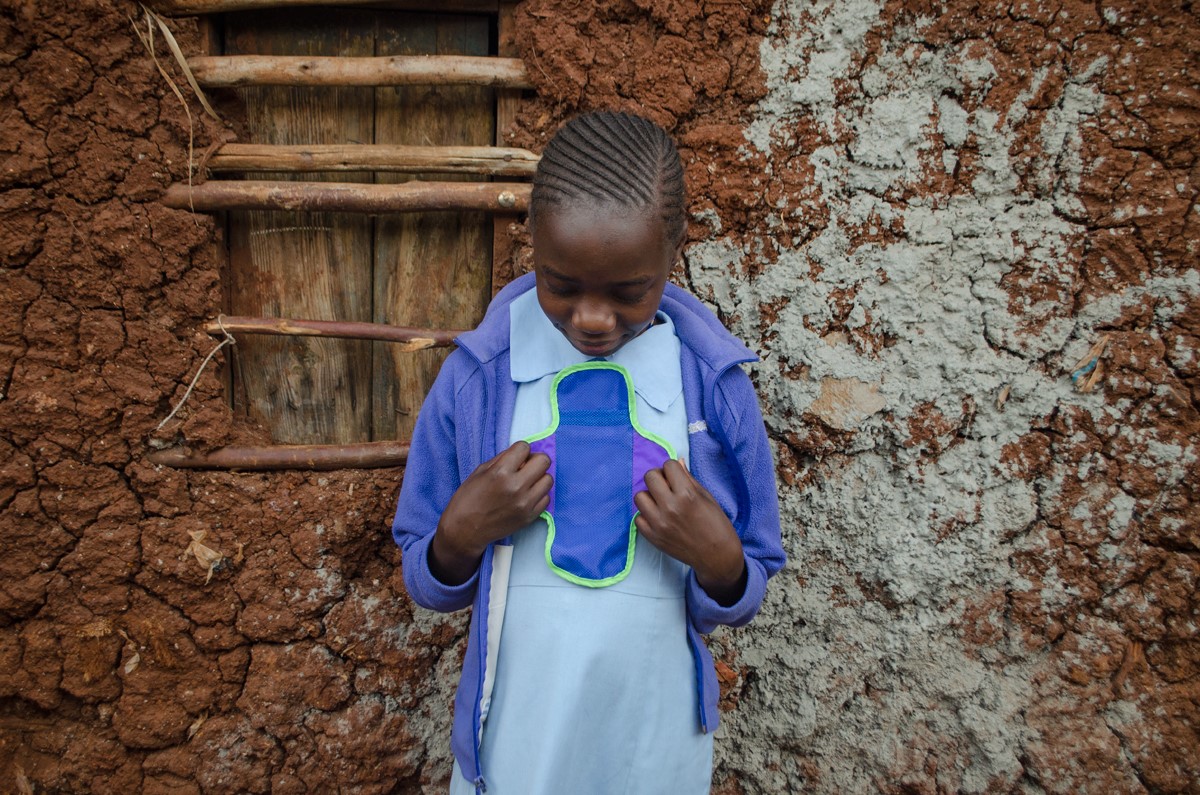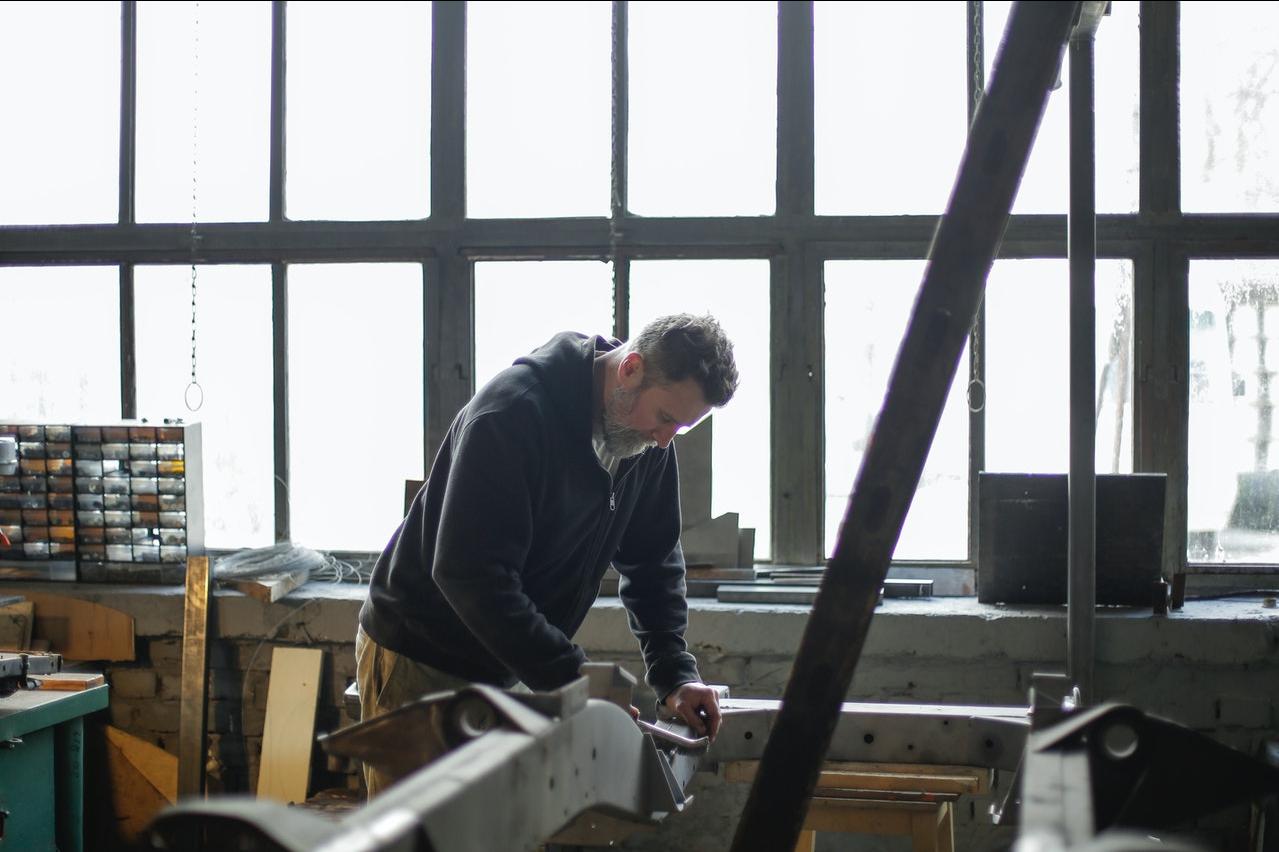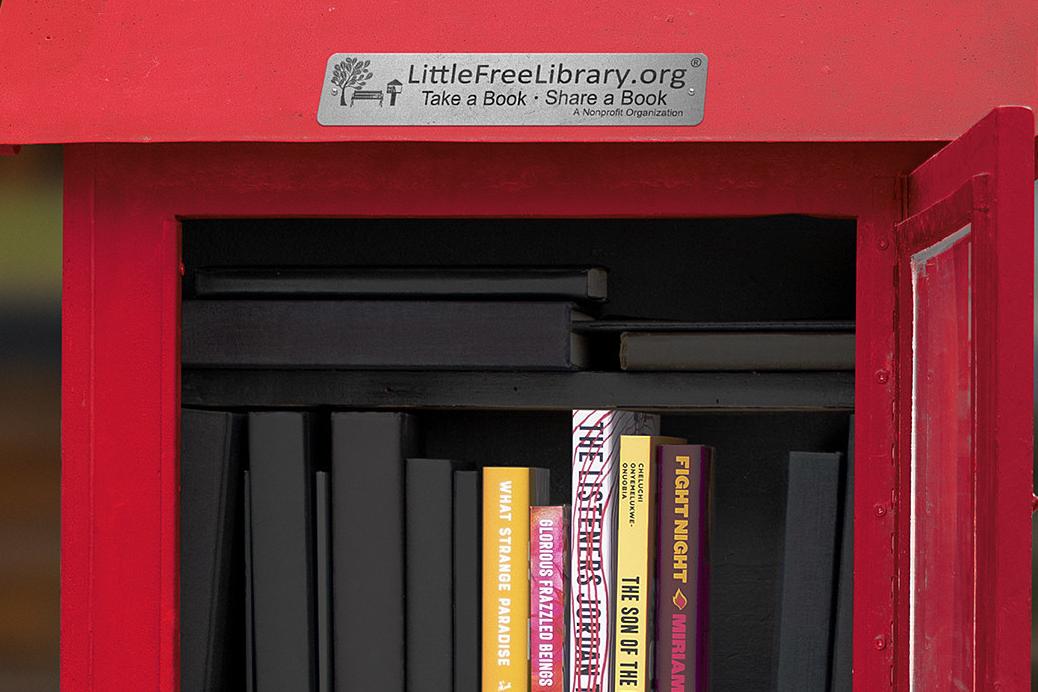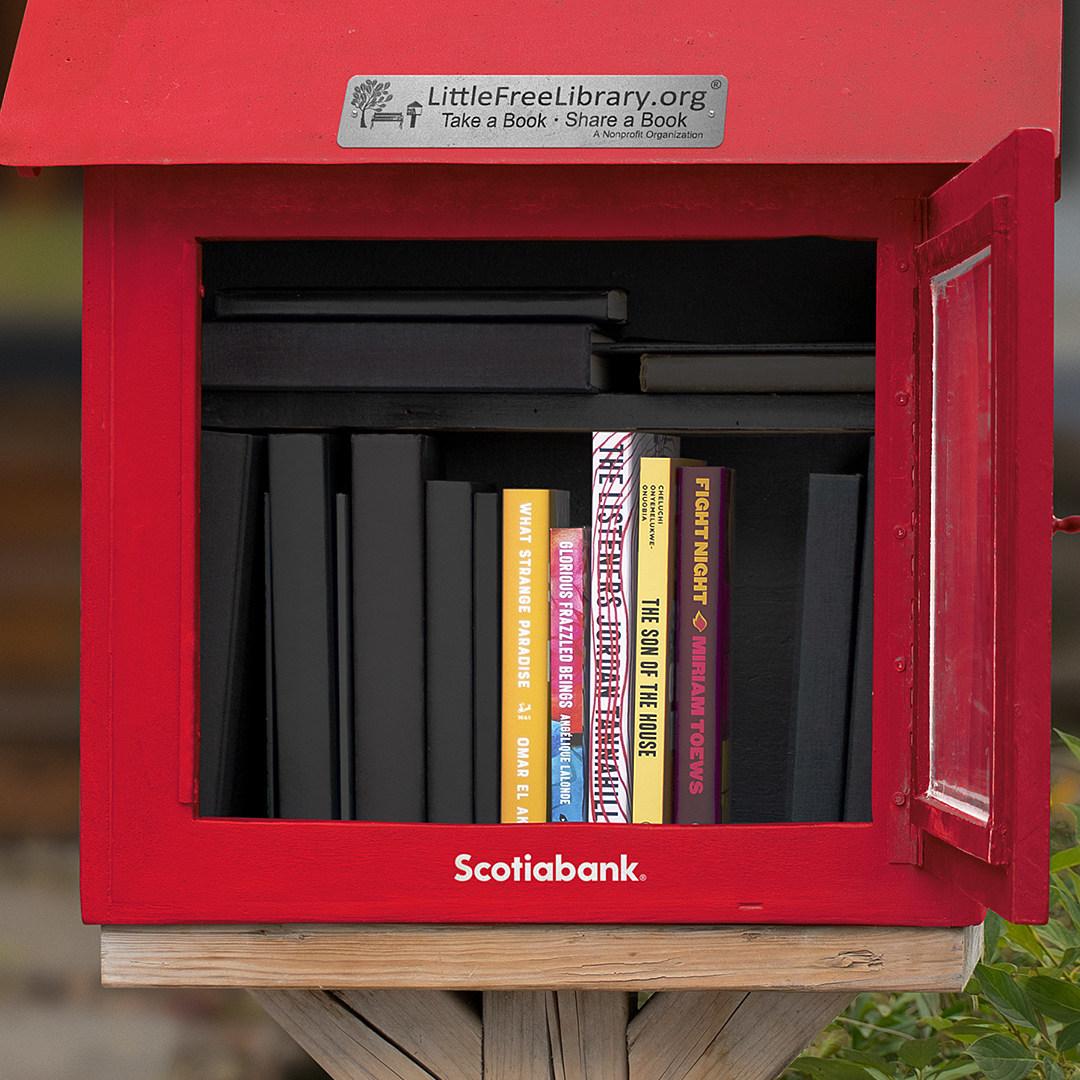COP26 Lends Companies an Opportunity to Strengthen Climate Action Messaging


Rainforest near the eastern shore of the Malaysian peninsula
The optics surrounding COP26 have been far from stellar, starting with accusations that the events in Glasgow have been more exclusionary than inclusive. Plus, there’s the additional fuss made over the menus last week, not to mention all the emissions from private jet travel that are linked to the climate talks.
COP26 is marked by two steps forward, then two steps back
But considering how difficult it is to get scores of nations to agree on anything, there has been some progress. For example, Indigenous activists have finally been allowed to make themselves heard, and agreements on phasing out coal were reached last week.
One ongoing challenge, however, is all the talk about “net-zero” and the precise meaning of that term.
Whether national governments or large corporations discuss their paths toward reducing and even eliminating their emissions that contribute to climate change, there lies plenty of confusion over what net-zero entails.
Furthermore, at least one survey has revealed that while net-zero goals have become a common tactic to take on climate change, there is a lack of urgency. According to South Pole, while almost half of 200 large companies showed almost have a net-zero goal, just over 20 percent have set their target date to 2040 or later; 40 percent have not set at a date at all.
Is there an alternative to “net-zero?”
Talk about 2040 or even 2070 is not reassuring to experts who have concluded that climate change risks could accelerate during this decade. And even if many worldwide goals for 2030 are achieved, society is still likely on a collision course by mid-century due to the warming planet.
Editor's note: Be sure to subscribe to our Brands Taking Stands newsletter, which comes out every Wednesday.
Add the criticisms that many current net-zero pledges are either unclear or rely on unproven technologies, the reality is that many companies could face reputational problems sooner than they think, as it has become clear that climate change impacts are occurring at a faster pace than many of us had originally assumed.
To that end, the Science Based Targets initiative (SBTi) has recently come up with its own net-zero framework, which among its strengths includes clearer goals – and an emphasis on short-term successes in slashing those emissions.
Companies should consider going a step further with their commitments and that this global climate action fight is not only about reducing emissions – together, however, the private and public sectors can work together to ensure another pandemic does not happen again.
We need to start talking about climate change and pandemics in the same breath
As the COVID-19 pandemic nudges closer to the two-year mark, here’s one thing most of us can agree on: Nobody wants to go through something like this ever again. Nevertheless, there's been little discussion on how society can prevent triggering another such crisis in the future.
The research has made it clear that a changing climate can trigger zoonotic diseases, especially in tropical regions – which include parts of the world that comprise an important part of the global supply chain. On that point, at least one coalition present at COP26 is determined to frame climate action as a means to prevent any future global pandemics.
“It is imperative that we realize that this pandemic is not something that is happening to us,” says the NGO Preventing Pandemics at the Source. “Rather, it is something we helped create by not properly considering the relationship between nature and our own health.”
Pushing the envelope long after COP26
Companies that align with SBTi are already demonstrating that, as the mantra goes, they believe in science. Taking this a step further, companies can show that a genuine commitment to climate action also proves they are focused on deploying their resources to ensure another pandemic of this level does not occur again. By making it absolutely clear that climate change and the pandemic are intertwined – and that they want to help find the answers – companies that take such a stand will emerge as important leaders doing their part to educate the public. At the same time, they also score the chance to build even stronger trust with their stakeholders.
There’s one caveat, of course – any net-zero or science-based target goals that can help mitigate the risk of another global pandemic must be transparent, measurable and prove that they are successful in the short term. After all, 2030 is not far away, but that year should not be one that is feared – if anything, the next nine years should be seen as an opportunity to further competition and show leadership on society’s most daunting challenge.
Image credit: Eutah Mizushima via Unsplash
To Fight the Ills of Social Media, Fight the Model


In the last few weeks, whistleblowers have exposed social media platforms as an empire of social decay.
First, the testimony of Frances Haugen presented before the U.S. Congress reverberated throughout households across the globe, leading them to question whether Instagram and Facebook were putting profits before people.
Second, a series of stories referred to as “Facebook Files” have brought to light the mental and physical health impacts of social media – specifically on children – and the company’s denial of its dependence on ‘filth’ for engagement and advertising revenue.
Finally, the Australian government drafted sweeping legislation to increase digital accountability and regulate the “coward’s palace” of unregulated social media. Changes like this are a good sign, but we don’t have to sit idly and wait for legislation. Even with the progression we see today, it will take many years before new laws and regulations are fully implemented. We can make change within traditional social media practices can today, by choice.
The evolution of storytelling on social media has competed, and in many ways integrated, with traditional journalism. But there is a key difference between traditional journalism and social media platforms; despite the perceived biases, traditional journalism across the world applies mechanisms for moderation and accountability.
Today’s social media platforms such as Twitter, Facebook, Instagram and TikTok have but a modicum of moderation, and absolutely no accountability. It wasn’t designed that way, of course. The architects of social media designed their platforms with moderation at the core. Through its ubiquitous accessibility and Olympic ping pong speed, social media subjects prime ministers, premiers, and even presidents of the United States to constant critique and feedback.
The problem is that social media platforms – as currently structured – reward dis- and misinformation. Polemic begets profit, and thus, social media has become the playground for “throwing #&%* till it sticks,” with a generation of young people, often women, bearing the brunt of this unregulated war zone.
Algorithms amplify misinformation because it pays. By tapping into our all-too-human confirmation biases, it leads to more engagement which leads to more advertising revenue.
A few years ago, a group of frustrated journalists took a leap into the tech-wilderness and created Pixstory, a fundamentally reformulated social media platform which launched in the United States mid-year. Pixstory is a grand yet simple social experiment: a platform which holds its participants accountable to facts and decency in conversation, and ambitiously, a place where integrity is valued.
Pixstory’s platform fosters healthy debate. Users can create stories in response to another user’s post that either supports the original post or offers a counterpoint using facts. Every user-generated post can be supported or challenged. However, when a post triggers a certain number of challenges, our app’s moderators move in to check for verifiable facts. If a story carries verifiable misinformation, we remove it.
Progressively, Pixstory is attracting journalists, government and elected representatives, professional athletes, cultural figures who often bear the brunt of trolling, and academics.
Pixstory’s algorithm rewards and recognizes truthful content. Equally, it flags non-truth and calls out hate and manipulation. Our community of contributors hold each other accountable by actively flagging content that is not credible. Pixstory’s army of moderators then review the flagged content for its accuracy and integrity.
Where there is doubt about whether a post contains misinformation, we have a process of community and expert review. Pixstory rewards users with higher integrity scores who demonstrate domain expertise by adding a Topic Expert badge on their profile, creating an informal transparent peer review system.
Artificial intelligence scans through user-uploaded photos, pictures and text to identify and eliminate both hate speech and explicit content. This is an important way that Pixstory differs from other social media platforms that deliberately take a lax approach to explicit content because it attracts “clicks.”
An integrity score drives visibility. Every time a user spreads misinformation or a hateful post, their integrity score lowers, affecting their visibility on the platform. It’s the same as the algorithms in existing social media, just in reverse. When a user falls below a certain integrity threshold, Pixstory removes them from the platform. In contrast, factual posts help to increase users’ integrity score and visibility.
Equity sits at the heart of Pixstory, which aims to offer recognition for the millions of people who have tremendous knowledge and expertise but are typically shut out of elite spaces of influence, access to media and public recognition. All of which contribute to social, cultural, class and economic divisions.
Since its launch, Pixstory has gained over 100,000 users from 110 countries and received endorsements from the sports community world-wide, leading its uptake – particularly women athletes, who have had enough of the toxic models of the traditional platforms.
It’s time we think differently about social media, and vote with our feet by walking away from platforms that profit from our misery. There is an alternative to the “cowards’ palace,” but as a society, we must choose to dethrone its emperor.
Guest articles reflect the opinions of the bylined authors and not necessarily those of TriplePundit’s editors and writers.
Image credit: George Pagan III via Unsplash
In the Global Supply Chain Squid Game, Small Businesses Are the Ones Wearing the Green Tracksuits


Not long ago, the chief concern of small businesses was that they couldn’t match the largest retailers’ buying power – with giant retailers, the more they buy the more they save, discounts that they can pass onto their customers and therein race ahead of their smaller competitors. Now, with much of the world’s supply chain still tied in knots due to lingering effects from the global pandemic, many small business owners are finding they can’t buy the products and supplies they need, period. For smaller retailers in particular, many of which rely on the holiday season for the bulk of their sales, months of worry could result in a bleak November and December.
It is just not smaller stores facing problems this year due to supply chain snags within the U.S. and abroad – just about every industry is taking a hit, but the smaller the company, the bigger the proverbial body blow.
Ripple effects from the ports
While stories about backlogged ports such as the ones in Los Angeles and Long Beach score copious press coverage, the challenges small businesses face, as well as all the backstories, are all over the map. Even if an independent business decides to avoid larger suppliers and decides to focus on smaller manufacturers, let's start with the question of packaging: The largest companies have been stockpiling cardboard, leaving small ones scrambling to find such materials – many have ended up empty-handed.
For medium-sized and larger suppliers, this ongoing supply chain saga confronts them with a delicate balancing act. For public companies that are in part responsible to their shareholders, it is fair to point out that they can’t risk infuriating their largest customers – a conundrum facing many toy manufacturers as Christmas approaches. “As a toymaker, once you miss your opportunity with a large outlet or have an out-of-stock, you end up on their black list. That’s enough to sink your business,” a former supply chain analyst told Abha Bhattarai of the Washington Post.
Not many are left unscathed from global supply chain snags
According to the U.S. Census, last month 45 percent of all small businesses reported some level of supplier delays, a steady increase from just under 40 percent of what they had reported earlier this summer. Such disruptions are widespread, including almost two-thirds of manufacturers and more than half of companies in the food service and hospitality sectors.
The data suggests U.S. consumers are ready to spend and the holidays are prime for unleashing those credit cards. But the problem is that the global supply chain is far from being able to catch up. “While consumer demand comes back relatively quickly after the economy reopens, supply chain capacity (ports, trucks, vessels, plants) only rolls up slowly,” said June Li, an associate professor of technology and operations at the University of Michigan. “This creates a major mismatch between demand and supply, further causing retailers to panic and inflate orders, sending the whole system into a downward spiral.”
From sheet metal to food containers to even pet food, many companies, and especially small businesses, keep feeling the pressure.
Who’s forced to wear those green tracksuits, anyway?
The result is a version of Squid Game being played out across the supply chain, with small businesses feeling as if they are the ones forced to wear those green tracksuits while the luckier and larger companies are the ones decked out in pink jumpsuits. As for who exactly is the Front Man, that remains to be seen: Intuitively we can assume it’s the giant brick-and-mortar and online retailers, though some have reportedly faced their own challenges. Another Front Man contender is China’s economy, which experienced a robust October of exports. As for China’s export competitors, many are trapped in the green track suits: smaller exporting countries such as Vietnam and until recently, Cambodia, have struggled with scoring COVID-19 vaccines for their citizens, adding to supply chain bottlenecks.
“The supply chain has been stretched, kinked and squeezed at every turn by the economic disruptions of the pandemic,” Ben Popken of NBC News wrote last month.
How can small businesses, and their customers, pull through?
There’s no shortage of advice for small businesses on helping them cope with this ongoing disruption, as in on-the-ground-solutions such as working with other local companies to identify new suppliers. At a higher level, advice such doubling down on a company’s value proposition or doing whatever is possible to maximize customers’ experience is also ubiquitous. One silver lining emerging from ongoing chaos within supply chains is that more consumers are aware of what is going on: The very term “supply chain” is no longer lingo confined to business school classes and corporate procurement offices. Therein lies the universal advice to any small business – being upfront and transparent about supply chain struggles will more than likely resonate with consumers.
As for how consumers can support small businesses at this time, the quick answer is a reminder that Small Business Saturday this year falls on November 27. The fact that's four weeks before Christmas may put more than a few people's teeth on edge: Unfortunately, fears over the supply chain have pushed many companies to start blaring out their Black Friday and holiday promotions early, which could make the ongoing disruptions even worse.
Here’s a suggestion from Terry Nguyen of Vox: Perhaps it’s time we as a society start buying less stuff. “If these supply chain problems are expected to persist, however, we must be prepared to curb our shopping habits,” Nguyen wrote last month. “Must we continue to drown in our unlimited and unfettered need for more stuff, or could we start buying less?”
That advice sounds odd at first, but dialing back consumption for a while could be what the supply chain doctor ordered till everyone across the supply chain is caught up.
It’s ingrained in many of us to keep buying stuff, especially during this time of year, yet there does lie one alternative: Consider an experience instead of things. After all, planning an afternoon or evening activity is that such a diversion won’t run into any kind of supply chain disruption (we’ll take that back if your local wine tasting venue has run out of vino or the paint night studio up the road is short on canvases). But just as small businesses have to think on their feet and become more creative during times like this, the same goes for consumers. Speaking of Squid Game, if your friends and family are fans of the Netflix phenomenon, blogger Chermaine Chee offers a suggestion on how you can plan such an activity – without any loss of life, of course.
Image credit: Vadim Bogulov via Unsplash
Lessons on Mentoring from a Sanitation Startup Accelerator for Women Entrepreneurs


(Image courtesy of Water For People)
The Women in the Sanitation Economy Innovation Lab aims to help women-led and women-focused businesses in the sanitation and hygiene space achieve success. An initiative of the nonprofit Toilet Board Coalition in partnership with Kimberly-Clark, the company’s foundation and its Kotex brand, the Innovation Lab recently completed its first pilot.
The pilot included five women-led startup businesses from Kenya, the U.S. and the U.K., along with 11 Kimberly-Clark employees across different functions from around the globe who acted as mentors to the group. The aim is to “cultivate and catalyze” businesses in the early stages of development to give the so-called “sani-preneurs” the training and tools they need to succeed.
During the first phase of the pilot, the team behind the Innovation Lab learned a great deal about how to build effective mentor-mentee relationships and empower entrepreneurs to accelerate solutions in their own communities. These lessons learned will inform the second iteration of the program, and they’re also a must-read for anyone looking to form effective corporate and NGO partnerships that drive social impact, build employee engagement, and help early-stage entrepreneurs bring their ideas to the next level.
Align the program with your purpose
The Toilet Board is on a mission to scale solutions for SDG 6.2, which calls for sustainable water, sanitation and hygiene access for all, with a focus on women and girls and those in vulnerable situations.
This aim clearly aligns with the Innovation Lab — and with Kimberly-Clark’s ambition to improve the lives of 1 billion people in underserved communities by 2030, along with Kotex’s brand purpose to ensure that a period never stands in the way of any woman’s progress. This synergy proved essential for success, leaders said.
“The number of mentors that stepped forward, their dedication to it, and the outstanding leadership of the Kimberly-Clark team leads was above and beyond what we hoped for,” Alex Knezovich, director of operations at the Toilet Board, told TriplePundit. “It demonstrates the power of aligning the program’s purpose so perfectly with Kotex’s purpose and what that can unlock for each stakeholder — most importantly, the businesses and employees that benefit from the program.”
From the Kimberly-Clark side, the enthusiasm was genuine and organic. “The Innovation Lab created great excitement at Kimberly-Clark locations around the world and across different functions,” Melis Sener, senior global marketing manager for adult and feminine care at Kimberly-Clark, told TriplePundit. “It was a great opportunity for our employees to personally contribute, create meaningful impact, and live our values. The Innovation Lab also sparked powerful employee engagement — since the goal of the program was very clear and focused, it drove that engagement way more than we expected.”

Tailor the mentorship program for each entrepreneur’s needs
Just like tailoring clothes, Knezovich noted that one of the contributors to success was ensuring that each entrepreneur’s experience was aligned to their individual needs. “We heard it loud and clear from these entrepreneurs: Program engagement is highest when the program is customized to the needs and priorities of the entrepreneurs, and it is most effective when it is as interactive as possible,” she told TriplePundit.
The program offered a number of resources to entrepreneurs, from finance and pitching, to marketing and supply chain advice, to human resources and more. But those resources were not part of a one-size-fits-all approach. Entrepreneurs entered the program with specific requests, and Kimberly-Clark and the Toilet Board worked to source expertise from their networks to meet those specific and evolving needs.
“Each business is so unique and their stage of growth so nuanced that tailored mentorship is where the real impact is found,” Knezovich explained.
Mentorship is a two-way street
“Entrepreneurs are naturally always learning and adapting ideas to the context of their businesses,” Knezovich said. “Approaching skills building as peer-to-peer learning is much more fun and fulfilling for everyone.”
This aligns with what experts note comprises a successful mentorship program: listening, setting specific goals and ensuring good communication. Further, as these entrepreneurs build their businesses in an area of critical and underserved public health needs, the stakes for success are high and the time to meet goals is limited, so getting things right is important.

Learning from lessons: What’s next for the Innovation Lab
Both Kimberly-Clark and the Toilet Board felt the pilot phase of the Innovation Lab exceeded expectations. “The selection of entrepreneurs and mentors was all new for us, and it worked really well,” Sener told TriplePundit. Now, both are looking at what comes next.
As a first step, the Toilet Board plans to expand the mentorship from six months to a year in the next iteration of the Lab and to grow their team internally in order to offer more support. The group is also building a network of advisors from the business community to provide guidance to the entrepreneurs after they have left the program. Experts note that continued engagement between mentors and mentees has lasting effects, both for expanding networks and improving skills.
Listening to the entrepreneurs is crucial to determine not only which mentor would be the best fit, but also how to structure and plan training and conversations. The Lab team found it necessary to be flexible, adjusting the program as needed as it progressed. But the structure still had to be there to ensure everyone received what they needed to take their businesses to the next step, Knezovich said.
“Hope and ambition run strong in innovators,” she told us. She said it was important for them to be realistic in terms of what could actually be accomplished during the pilot, inserting checkpoints every two to three months to make sure everything stayed on track.
The proof is in the impact on entrepreneurs
The bottom line, however, was the impact the program had on the participants. “The relationships that are initiated and cultivated in programs like this have immediate and tangible implications on the businesses and business leaders,” Knezovich said.
For Kimberly-Clark, participation not only contributed to the company’s social impact goals, but it also had a significant impact on its employees who served as mentors. “At Kimberly-Clark, our purpose is to provide Better Care for a Better World, and leading programs like this with our NGO partners is a key part of how we deliver on it. The Innovation Lab is a great example of how our employees can help accelerate positive change and support female leaders who are addressing some of the biggest sanitation challenges that disproportionately impact women,” Sener added.
In the end, the success of the Innovation Lab pilot means that women-owned and women-centered businesses can help fill the gaps for various critical societal needs so that all of us can live better lives. Mentorship programs that work are the ones that do not just pull a suit off the rack and assume it will fit — they take careful measurements and tailor appropriately.
This article series is sponsored by Kimberly-Clark and produced by the TriplePundit editorial team.
Images courtesy of Water For People, Be Girl and Syna Consultancy
What Can This 20-Year-Old Recycling Program Teach Companies About Circularity?


When it comes to the pursuit of a circular economy, the big innovations often grab the headlines while sustained achievements continue quietly with little hullabaloo. Here’s an example from ceiling and wall solutions company Armstrong World Industries, based in Pennsylvania, which has been running a ceiling recycling program for over two decades.
Now, recovering material in the construction industry may not sound like it’s going to change the world, but it may just make a dent. The U.S. construction and demolition sector generated 600 million tons of waste in 2018, the most recent year for which data is available from the Environmental Protection Agency. By weight, that’s more than twice the amount of municipal waste generated by homes and businesses that year, according to the agency.
Armstrong’s program isn’t flashy, but it’s effective. The company says its Ceiling Recycling Program has reduced the need for virgin raw materials by over 1 million tons to date. “We’ve recycled more than 200 million square feet of ceiling panels from renovation projects,” Anita Snader, the company’s environmental sustainability manager, told TriplePundit. Consistent throughout the manufacturer’s story is commitment, and commitment is what Snader recommends to other companies pursuing circularity.
Building a recycling program through trust and partnerships
Through Armstrong’s program, ceiling materials are sent to the company’s closest manufacturing plant after they are removed during renovations or demolition, and Armstrong recycles them into new ceiling panels in a closed-loop process. This allows the company to sell products with high recycled content, which in turn helps customers achieve green building ratings and carbon reduction goals.
The program began as a customer request: A major company came to Armstrong asking for an alternative to dumping its old ceiling tiles in a landfill, Snader said. The program stuck, and since then major developers, retailers and tech companies have used it to recycle their old tiles. “At that point, when it was introduced, I think it was something new. It was embraced, because it was something new to take advantage of,” Snader reflected.
Corporate clients already used Armstrong’s products and trusted them as high quality, giving salespeople a platform to educate the industry about the new option and allowing the company to build its recycling program before climate and zero-waste commitments became prevalent, Snader said. “It really is an alternative to the whole ‘take, make, dispose’ thinking,” she told us.
Standing as a pillar during Armstrong’s early sustainability efforts, the recycling program has since scaled across the United States and into Canada, and partnerships have been key for broadening reach, Snader said. For example, the logistics of demolition and material removal can be particularly challenging in big cities like New York. Armstrong has developed a partnership with a major material recovery facility that is adept at working in New York’s dense commercial districts so it can recover more material for recycling. “We’ve been reaching out to others that are focused on material recovery through all these 22 years,” Snader told us.
Bringing value to customers is also central to the program, she said. After all, meeting a customer’s need is how the program began. “We’re always looking at … ways to bring value to our customers, and [recycling] provides a way to do that,” she told us.
“Recycling programs like Armstrong’s have helped our company and customers address our publicized commitments toward landfill diversion and pollution reduction,” Mark Chen, senior sustainability engineer for Skanska USA Building, a contractor working with Armstrong, added.
From recycling to circularity
Moving forward, Armstrong has committed to sustainability goals that aim for circularity. By 2030, the company’s targets include recycling, reusing or repurposing half of its products at end of use, and reducing its carbon footprint by half and water use by 20 percent. Aiming for these goals has required a refresh to some aspects of the business, Snader said, including a new partnership with the Ellen McArthur Foundation.
As part of Armstrong’s partnership with the foundation, the company evaluated its progress toward circularity using a tool call the Circulytics Assessment. “As part of our waste reduction goals, we now have a baseline measurement of progress which will serve as a start to creating a roadmap for improvement,” Snader said.
Again, the big practical takeaway is partnerships — not only to help fulfill services like waste collection and hauling, but also to support education and awareness. In the building industry that may include providing specifications for building owners, general contractors and architects to consider recycling in the planning phase or helping customers estimate their diversion and recycling savings. (Armstrong provides its customers with a recycling savings calculator.) Across many industries, another critical component is building the infrastructure for manufacturing facilities to process recycled material.
Any closed-loop system — in any industry — has a lot of moving parts, but Snader said the commitment is worth it, citing one of her favorite quotes to encapsulate the purpose of circularity: “There really is no away,” she told us — no away from planet Earth, that is. Meaning that materials don’t have endless life. When materials are thrown away, they do not simply vanish, rather they go to a landfill. The key to achieving circularity is extending the use of materials for as long as possible.
This article series is sponsored by Armstrong World Industries and produced by the TriplePundit editorial team.
Image courtesy of Armstrong World Industries
How E-Commerce Can Push the Sustainable Packaging Trend


The rise of e-commerce has also given rise to enormous piles of discarded shipping boxes and packaging materials that sit at the curbside as monuments of waste. At the same time, the e-commerce trend also provides brands with new opportunities to adopt circular strategies that attract a new generation of environmentally conscious consumers. If consumer sentiment is not motivation enough, emerging trends in government policy should spur brands to reduce waste and act ahead of new waste management regulations, instead of reacting to them.
A circular economy lesson for the U.S., from Canada
Brands that do business in the U.S. market can look to Canada for a glimpse into the future. Over the past years, multiple Canadian provinces have been transitioning into the extended producer responsibility (EPR) model, in which manufacturers and suppliers are held accountable for the impacts of their products all through their lifecycle, including their fate beyond consumer use.
Unlike jurisdictions in the U.S., Canadian provinces such as Quebec require suppliers of cardboard boxes and other recyclable materials to either compensate municipalities for the cost of curbside recycling service (Québec, Manitoba and Saskatchewan) or ensure the service, including sorting and recycling activities, on their own (Ontario and British Columbia).
Offsetting the cost of recycling would be a significant change in the U.S. all on its own, but the Quebec model doesn’t stop there.
Last winter Quebec’s Minister of Environment and Climate Change, Benoit Charette, announced the province's next big step into the extended producer responsibility field. The new regulations will require companies that supply containers, packaging, and printed paper in Quebec to take direct responsibility for making sure they are collected, sorted, and recycled, rather than simply fronting the cost.
Bringing recycling full circle
Under the new regulations, producers and suppliers will have to ensure that recycling operations are available and compatible with their products. They will also have to help build reliable markets for recycled materials.
The new regulations are expected to go into full effect by 2025. Many producers are not waiting for the new obligations to kick in and have already begun to coordinate strategies with recyclers.
That includes the sustainable fiber and paper company Sustana, who has been partnering with producers to help ensure that recycling operations can accommodate new types of paper cups and other products that are expected to hit the market in increasing numbers as the plastic ban trend gathers steam.
Leveraging e-commerce for sustainable packaging
Geneviève Dionne is an industrial design expert in ecodesign and packaging with Éco Entreprises Québec, the private nonprofit organization created by suppliers of containers, packaging, and printed paper in Québec to handle their financial responsibility in municipal curbside recycling services. She emphasizes that brands can leverage e-commerce to work within the new regulations.
“Those who use packaging to market goods must now manage it and make sure it gets recycled,” Dionne told TriplePundit. “The industry has to prove that packaging is compatible with the curbside system and is recyclable in practice, not just in theory.”
The e-commerce difference is simple yet significant: With online shopping, brands no longer have to produce high volumes of eye-catching shelf packaging to attract consumers. That is an advantage for companies facing new recycling regulations, such as those in Quebec. “Packaging is part of our purchasing process decisions: When you buy online, you pay less attention to packaging and more to the product, so there is more attention to basic and neutral packaging for delivery,” Dionne added.
Still, there has been a learning curve. At the beginning of the coronavirus pandemic, Dionne and her team at Éco Entreprises Québec saw a great deal of “over-packaging” as companies delivered goods in the same packaging designed for store shelves or in oversized boxes. More recently, companies are beginning to dial down their packaging to fit the e-commerce delivery model, Dionne said. She also noted that the Canadian postal services are beginning to test reusable packaging, leading to the possibility that companies could share and reuse delivery envelopes and boxes.
Collaborating to cut non-recyclable materials
Reducing the need for elaborate, shelf-style packaging is a hidden benefit of e-commerce, but it could be outweighed by the continued use of non-recyclable materials in delivery containers and interior padding.
Sustana has been working with Éco Entreprises Québec and other partners to minimize the use of non-recyclables and focus on fiber content, Emily Olson, director and sustainability ambassador at Sustana, told 3p. “Fiber packaging is the most recycled type in the waste stream,” she explained. “In the U.S., over 66 percent of paper and paperboard products are recycled, in contrast with less than 5 percent of plastic, so this is an exciting opportunity to reclaim and recycle packaging into new products.”
She is optimistic about the opportunities for agencies, consumers, and companies to collaborate on e-commerce packaging that moves the circular economy forward. “The COVID-19 pandemic has given consumers and companies the opportunity to hit pause and really look at our consumption,” Olson said. “We are absolutely seeing a reduction in the volume of packaging. We are also seeing more ‘smart design’ systems that use fewer resources to get the same performance.”
How e-commerce can open the door to circularity
As Olson sees it, the increased dependence on delivery packaging has made brands more aware of the opportunities to attract consumers through the use of recycled fiber. “I’ve been excited about seeing so many brands — from the Fortune 500 to small startups — make greener packaging commitments,” she said. “They’re increasing recycled content, ensuring that their packaging is recyclable, and expanding reusable packaging options.”
It’s also possible that consumers accustomed to more sustainable e-commerce packaging will begin to shift the sustainability needle on in-store packaging, too.
That could be a particular challenge in the area of food packaging, but the market appears to be poised for transformation. In fact, food retailers have been introducing their own iterations of the 1970s-era “Generic Brand” trend in recent years. Some leading food brands also have a long history with recycled fiber in food packaging — notably Kellogg Co., which has been using recycled fiber in cereal boxes since 1906.
Until recently the sticking point has been packaging that comes into direct contact with food. In the U.S., those materials need to be compliant with Food and Drug Administration standards, which previously provided a challenge to adding recycled fiber into food packaging.
That, too, is changing. The pressure on companies to use more recycled content has also created an incentive for paper recyclers to innovate and invest in new technology that enables more widespread use of recycled fiber.
In 2018, for example, Sustana became the first recycler in North America to achieve FDA compliance for direct food contact, under the proprietary name EnviroLife. In addition to packaged foods and beverages, EnviroLife is a game changer for brands and companies in the area of takeout foods and beverages. That includes meal kits, another field that has seen growth during the COVID-19 pandemic.
Within the e-commerce framework, these trends are converging to build a new model for consumerism that relies more on the Internet for visual attraction, and less on extracting virgin natural resources from the Earth. The pieces are all in place, and now it is up to brand leaders to seize the opportunity — before policymakers force the issue.
This article series is sponsored by Sustana and produced by the TriplePundit editorial team.
Image credit: Sustana
How Local Leaders Can Push Forward on Sustainable Procurement


Local officials leading on climate action now have access to an operations tool to help them achieve their goals, starting with sustainable procurement.
According to a new guide released by the Canadian Collaboration for Sustainable Procurement (CCSP), buyers, suppliers and community stakeholders can work together when selecting and purchasing more responsible and sustainable goods and services from suppliers.
With COP26 generating even more debate about how society can take on climate change, the guide’s release is timely. After all, sustainable procurement requires long-term thinking of where materials are coming from, their impacts on natural resources, how much packaging they consume and the labor conditions in which these goods were produced. With the buying power that municipalities and their suppliers together hold, tacking procurement through a sustainability lens can help drive bolder climate action.
The bottom line is that if integrated across purchasing processes and local government projects, sustainable procurement can become one important tool in helping fight climate change.
The guide’s authors insist that conversations surrounding sustainable procurement must take place at the municipal level – the numbers themselves tell the story, as in Canada alone such purchases total into the tens of billions of dollars. Through its guide, CCSP aims to educate communities and local officials about how to drive new pilot projects and programs for sustainable procurement.
Why sustainable procurement absolutely matters
"Sustainable procurement is important because it is perhaps the singular function within a large organization that has the ability to simultaneously drive multiple sustainability priorities, green priorities, social priorities, economic development priorities [and] risks priorities,” said Tim Reeve, Managing Director of CCSP, during a recent interview with TriplePundit.
This process can be beneficial for businesses because it is cost-efficient, can create a competitive advantage and helps businesses meet existing regulatory compliance – while not necessary increasing costs. However, engaging both suppliers and buyers on any matter related to sustainable procurement is a complex task. This is especially true as city officials already face arduous challenges when implementing sustainable procurement procedures, according to the guide’s authors. The challenges often include a difficult budgetary process, increasing demands for services from local citizens, and meeting local stakeholders’ expectations related to sustainability.
Three myths about sustainable procurement
Common myths about sustainable procurement can thwart any progress. The guide’s authors discredit this first myth: Sustainable goods and services are more expensive by explaining that the lifecycle of a purchased product or service outweighs the overall cost of ownership. Investments in sustainable procurement aren’t as costly as presumed. In fact, raw materials represent a small portion of the final product price: specifically, no more than 1 to 4 percent quarterly.
Another common myth that the guide’s authors rebut is any assumption that more sustainable options currently in the market are either largely unavailable or effective. The demand for more sustainable products is growing and these products and services often perform strongly. In fact, online searches for sustainable goods have increased by 71 percent since 2016 and global media coverage of environmental issues increased by 7 percent between 2016 and 2018.
Common myths of sustainable procurement don't only extend to demand or price, but time as well. The guide's authors dispute the notion that sustainable procurement is time consuming, as they explain that any tools local officials need for implementation are already available and can also help meet their municipalities’ needs.
All eyes on everyone
While the CCSP developed this sustainable procurement guide as a call to action for local governments and CEOs, Reeve told 3p that it also targets other players.
Reeve explained to 3p that for any sustainability plan to succeed, all departments within an organization must participate. “Organizations have discovered that they can only get so far on their core pillar programing, those zero waste programs, carbon neutral programs, economic development programs, etcetera,” said Reeve. These programs are interconnected with operations and supply chains. And, he added, procurement can help break down silos that can develop between various departments.
In addition to the CCSP’s 10-point framework, the guide’s authors recommend specific actions that staff can take to implement sustainability programs. For example, a department’s employees can pursue sustainability opportunities during purchasing. Meanwhile, suppliers and vendors can engage in training and contribute to data collection when requested by buyers. These actions are critical to tackling two major challenges of the sustainable procurement process: data collection and measurement.
Quantifying results to demonstrate impact
“I think there needs to be much more work done on measuring the impacts of sustainable procurement efforts and just measuring sustainable procurement activity overall,” said Reeve. He explained to 3p that there are two ways to do this. The first is questioning whether organizations are buying in accordance with their policies and procedures. This includes valuing sustainability challenges when placing competitive bids and evaluating suppliers. The second is ensuring better measurement of these efforts. Such data points include quantifying decreases in emissions, reductions in wasted packaging and any resulting job creation.
Though the UN’s 2030 Agenda for Sustainable Development includes procurement practices, only 24 countries up till 2020 reported having regulatory and legal tools for this in place. Indeed, there is much work left to do. With the best possible measurement and indicators in place, a call to action can kick off the necessary pilot projects and investments for sustainable procurement.
Image credit Andrea Piacquadio via Pexels
This Bank Gave a Big Lift to the Little Free Library Movement


The financial giant Scotiabank is paying to put some of Canada’s best fiction in libraries – as in the very little libraries – to give more citizens access to the country’s most-acclaimed writers. Through a partnership with Little Free Library, the global free book-sharing program, Scotiabank is donating copies of the five finalists for the Scotiabank Giller Prize to the petite book-boxes known as Little Free Libraries across the nation.
The winner of the 2021 Scotiabank Giller Prize – judged the year’s best fiction work by a Canadian author – is scheduled to be announced this evening on the television network CBC and its free online streaming service. Judges include three award-winning Canadian authors, one American and a Malaysian writer.
"By providing more opportunity for Canadians to access the Prize's shortlisted novels, we hope this initiative creates Canada's largest book club, and that readers of all ages, from coast-to-coast find comfort, solace, adventure, action and learning from this year's talented shortlist," said John Doig, Scotiabank’s executive vice president for retail sales.
Scotiabank’s Storyteller Shelves campaign, which include signs and billboards posted across the country, also allow people to read enhanced previews of all of this year’s contenders for the Scotiabank Giller Prize. Citizens simply scan a QR code to read the excerpts.
The Giller Prize was founded in 1994 to honor Canada’s best fiction writers. Scotiabank began to partner with the prize’s organizers in 2005, thereby creating the Scotiabank Giller Prize. While initially the top award was $25,000, winners now receive $100,000 and the four finalists each get $10,000. Past winners have included Alice Munro, Mordechai Richler and Margaret Atwood, author of The Handmaid’s Tale.
Putting copies of the five finalist books directly into communities introduces readers to outstanding stories they might otherwise have missed. The nonprofit Little Free Library started with one book box in 2009 in Hudson, Wisconsin, and now boasts more than 100,000 volunteer-run free libraries in more than 100 countries. The “libraries” resemble large-size birdhouses on poles with shelves inside for books and see-through doors. Community members are encouraged to borrow books as well as donate some. Readers share more than 42 million books each year.
One of this nonprofit’s recent initiatives is Read in Color, an effort to bring more books featuring diverse cultures and lifestyles to the boxes in communities.
These “book bundles” do have detractors. Some librarians fear that cash-strapped towns will close their public libraries and rely on the little book boxes, depriving communities of needed services. When the El Paso Texas, Public Library adopted a $50 yearly user fee for nonresidents, the nearby library-less town Vinton opted to install five Little Free Library boxes throughout the town, which some critics say are poor substitutes for a full-service library.
But at the same time, more than 600 public libraries in the U.S. have their own Little Free Libraries to extend their reach. The group’s goals include not only growing readers, but also the encouraging of building a sense of community across neighborhoods.
"Our mission for Little Free Library is to be a catalyst for building community, inspiring readers, and expanding book access for all," according to Greig Metzger, Executive Director of Little Free Library. “Placing free, brand-new novels in our book boxes nationwide is the perfect way to bring Canadians closer to some of the country's best storytellers."
Image credit: CNW Group/Scotiabank
Oddly Enough, COP26 Could Reshape the Global Food Sector


Depending on where one is perched, COP26 has already made notable progress as the Glasgow climate talks reach the halfway point, or to quote an well-known Swedish activist, it’s all a bunch of “blah, blah, blah.”
It’s certainly understandable why youth activists are frustrated by the COP26 proceedings. Face it, they will suffer the most in the long run if climate change continues unchecked. At the same time, herding scores of countries to reach agreement on anything, even if the terms are voluntary and non-binding, is far from an easy feat. That also begs the question if such a mega event is necessary at all.
Furthermore, the cringeworthy optics that marred the first few days of COP26 – including all that private jet travel and menus showcasing meat and fish – has not helped the climate talks’ cause. It’s easy to dismiss the event as a yet another elitist series of confabs that won’t achieve much.
But out of the haggis, er, hubris, of COP26 could come lasting change to how citizens look at the food they eat. Calling out hypocrisy isn’t always productive but it can force people to look inward. Add a few pop culture figures who are making the rounds at COP26, and the dismay over what, or what doesn’t, occur during the Glasgow talks could very well push more citizens to take action on their own.
At the same time, necessity and demand lead to invention and innovation, so what some see as the ashes of COP26 could very well turn out to become gold nuggets for entrepreneurs in the food startup space.
Depending on the source cited, about one-third of the world’s emissions can be traced to the global food sector. That’s a daunting number, but it certainly can be whittled down in size.
And therein lies the power of young people: What they lack in the political power that is denied can be countered by their influence over the choices of their families and peers, and that includes where they shop and what they eat. To that end, watch for these three niche food sectors to thrive in the coming decade.
Plant-based foods still have plenty of room for growth
They’re no longer a trend: Plant-based protein alternatives are here to stay, new choices keep proliferating and they are no longer relegated to high-end restaurants and boujee supermarkets. Supposedly, the menus at COP26 were supposed to be overwhelmingly plant-based in the first place, but many things seemed to have gotten lost in translation.
Let’s remember the very term “plant-based” means different things to different people. Not everyone is enthusiastic about processing ingredients like soy and peas and making something that tastes almost like meat. Many citizens who are cognizant about climate change will argue that plant-based means exactly that: plants. The reality, however, is that for generations who grew up on meat, plant-based protein options are a bridge toward rethinking how we approach our diet as consider the food industry’s impact on the planet.
Cultured, lab-grown meat will win more interest
Going back to the plant-based argument: There’s a case to be made that if fake meat means more land to grow commodities like soy and corn, that isn’t necessarily a viable long-term option. (Peas and peanuts, on the other hand, are generally viewed as beneficial as they are nitrogen “fixers” that can help keep soil healthy.) Bottom line, plant-based foods are an important tool in the climate action toolkit – not the entire toolkit in themselves.
That leaves the door open to food technologies such as lab-grown or “cultured” meat. For several years already, such companies have scored press and venture capital money. So far, lab-grown meat has limited reach, as in Singapore. Two huge hurdles lie in this nascent sector’s path: regulatory approval and winning acceptance from consumers. The U.S. government is moving slowly on this front; across the pond, things aren’t moving much faster.
While at least one study has suggested that lab-grown meat could be as cost-competitive as the “real” thing by 2030, many questions remain unanswered. Think of lab grown meat the way algae-based biofuel factored in the renewable energy sector: Would the amount of energy it needs, not to mention factory space required, make this a viable industry? The flip side to that concern is that much of the planet’s land is currently used to raise livestock. In any event, one company and the financiers backing it have made their answer clear, as an industry-scale factory in northern California is ready to churn out lab grown meat, even though U.S. federal regulators haven’t given their green light yet.
To be clear, “lab-grown” doesn’t pertain only to animal-based protein. Startups milking a lab-grown alternative to what cows produce are making some noise, and at least one company says it’s cracked the shell, and code, on lab-grown eggs.
What if we, and the stores we visit, could 3D print our own food?
You probably will not be 3D printing a veggie lasagna in your kitchen or garage anytime soon, but who’s to say your local grocer wouldn’t? After all, it’s already happening at a few stores, and one Dutch supermarket chain began churning out 3D printed cakes several years ago. Add this additional food for thought: Climate change is already having effects on some commodities such as coffee and chocolate, and startups creating molecular alternatives say their products can deliver quality and taste without any environmental or human rights impacts.
3D printers at individual retailers are not a bonkers idea. The trick at hand in winning consumer acceptance, however, is to focus less on the technology and more on the environmental and health benefits. One group of researchers found that their experiment of 3D printing chocolates resulted in samples that contained less sugar, yet no changes to taste or texture. If that technology can scale up and include more everyday foods, we could see a new definition of what qualifies as a “local” food product – while reducing the amount of ingredients, packaging and of course, emissions from shipping all those boxes across continents.
Image credit: Caroline Attwood via Unsplash